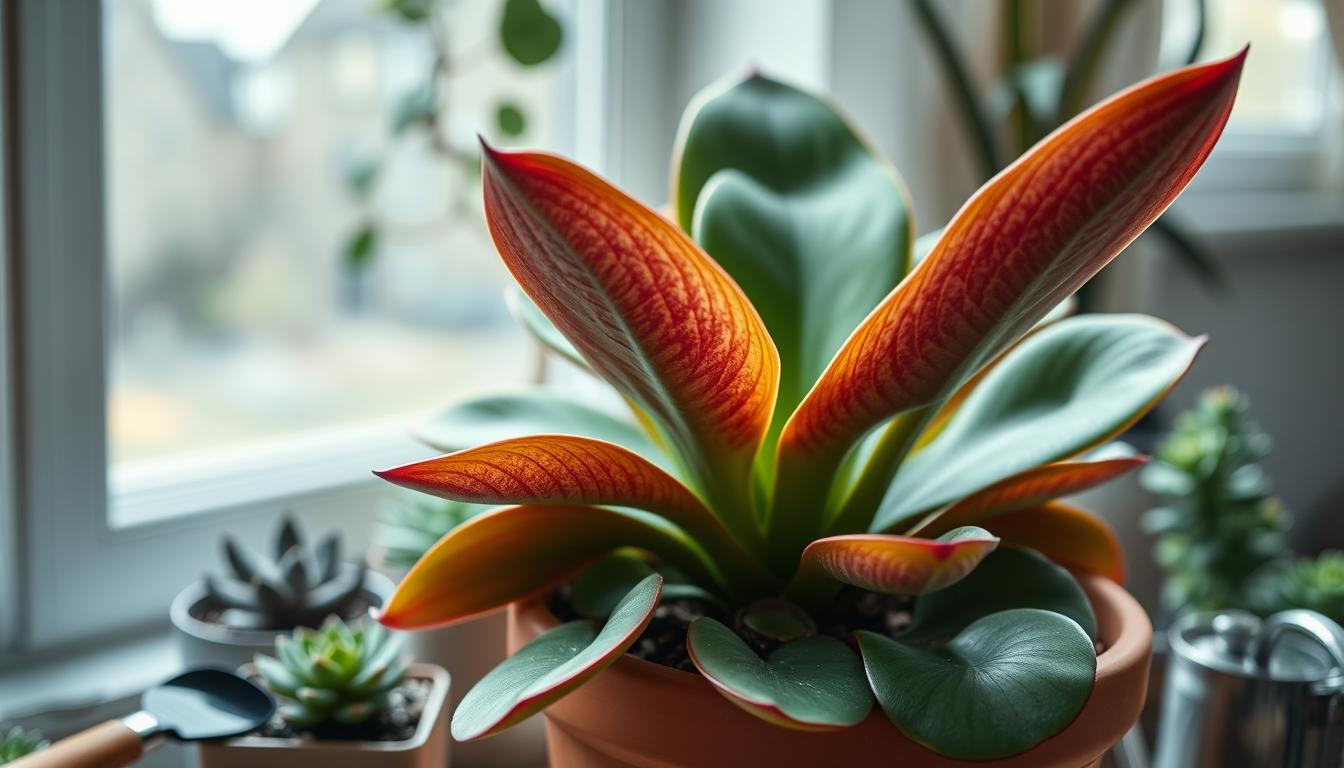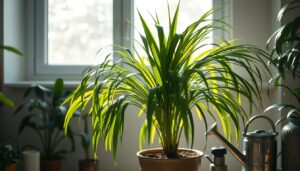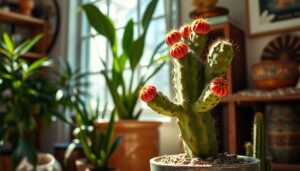Learn about Paddle Plant care and enjoy its beautiful leaves. You’ll find out how to water and light it right. This plant is great for homes or gardens because it’s easy to care for.
Discover how to care for your Paddle Plant. It has cool leaves that change color in sunlight. This plant is easy to care for and looks great indoors or outdoors.
The Paddle Plant can live in many places and is very hardy. It makes your air cleaner, lowers stress, and looks amazing. Caring for a Paddle Plant is fun and rewarding, no matter your gardening skill.
Introduction to Paddle Plants: Characteristics and Appeal
Paddle Plants are loved by many for their special looks. They have thick, fleshy leaves that look silvery-gray or bluish-gray. This makes them stand out and protects them from too much sun.
These plants are easy to care for but look amazing. They come in different sizes and shapes. Some grow small and bushy, while others spread out more.
Paddle Plants love bright, indirect light and dry soil. They can grow big or small, depending on the type. With the right care, they add beauty to any room.
Paddle Plants are a hit among plant lovers. They’re easy to care for and look great. If you want to add something special to your home, try a Paddle Plant. You’ll love it!
Essential Paddle Plant Care Guidelines
To keep your Paddle Plant happy, you need to know its basic care. Lighting is key; it loves full sun. This means it needs direct sunlight for 4-6 hours a day. For more tips, check out trusted houseplant guides.
For Paddle Plant light needs, give it the right sunlight. It can handle some shade but not too much. Full sun is best, aiming for six hours of direct sunlight daily. This makes the plant healthy and brings out its colors.
Watering your Paddle Plant is important. Water it when the top inch of soil is dry, about once every 1-2 weeks. This keeps the plant healthy and prevents root rot.
Understanding Light Requirements
The Paddle Plant needs full sun to partial shade. It’s great for rooms with big windows. But, it can’t handle too little light.
Optimal Watering Practices
Watering is key for Paddle Plant care. Only water when the soil is dry to the touch. This keeps the plant healthy and prevents root rot.
Choosing the Right Soil
The Paddle Plant likes well-draining soil. Use a cactus mix or a mix with sand and peat. This keeps the soil from getting too wet and keeps the plant healthy.
Health Benefits of Having Paddle Plants in Your Space
Adding a Paddle Plant to your home or office does more than just look good. It also brings in a natural air cleaner. This plant can remove harmful toxins like formaldehyde and benzene from the air.
Paddle Plants are great for city areas where air is often polluted. They help make the air cleaner and healthier. Studies show that plants like Paddle Plants can clean up to 87% of toxins in 24 hours. They also help reduce stress by 34%.
Air Purification Qualities
Paddle Plants love dry places, which is good for saving water. They need very little water, which is perfect for dry areas. Having plants like Paddle Plants can make you feel less stressed and happier.
Enhancing Your Home’s Aesthetic
Paddle Plants not only clean the air but also make your home look better. Their special leaves change colors, adding beauty to any room. They make your space feel calm and peaceful, improving your mood and reducing stress.
Common Mistakes to Avoid in Paddle Plant Care
When you care for your Paddle Plant, knowing common mistakes is key. Overwatering can cause root rot and harm your plant. Also, ignoring its temperature and humidity needs can stress it, leading to leaf drop or slow growth.
To keep your plant healthy, understand its needs well. Here are important tips:
- Water your plant carefully, letting the soil dry out between waterings
- Place your plant in a spot with a steady temperature of 65°F to 75°F
- Keep indoor humidity levels average to avoid stressing your plant
By avoiding Paddle Plant common mistakes like overwatering and neglecting temperature and humidity needs, you can help your plant thrive. Watch your plant closely and change its care as needed to prevent problems.
With the right care, your Paddle Plant will be a beautiful part of your home. It will add natural beauty and calm. By avoiding mistakes and giving your plant the right conditions, you’ll enjoy a healthy and vibrant Paddle Plant.
Propagating Your Paddle Plant
Exploring Paddle Plant care is exciting. You can share your succulent with others or grow more. You can use leaf or stem cuttings to propagate. The best time is in spring or early summer when the plant is growing.
Leaf cuttings are easy and often work well. Just take a leaf, let it dry a bit, and plant it. Stem cuttings need a bit more work but can also work. Both need patience and the right care.
Optimal Timing for Propagation
The best time to propagate is when the plant is growing. This is usually in spring or early summer. This helps the new plants grow well.
For success, use good soil, plenty of light, and the right temperature. Follow these tips and you’ll enjoy growing more Paddle Plants.
| Method of Propagation | Success Rate | Optimal Time |
|---|---|---|
| Leaf Cuttings | High | Spring/Early Summer |
| Stem Cuttings | Medium | Spring/Early Summer |
Troubleshooting Paddle Plant Issues
As you care for your Paddle Plant, you might face some problems. Paddle Plant troubleshooting is key to solving these issues early. Watch out for common pests and signs of too much sun.
Pests like mealybugs and spider mites can harm your plant. They damage leaves and stems. It’s important to spot signs of overexposure like brown leaves and color changes. This helps you fix the problem and avoid more damage.
Identifying Common Pests
Some pests that can harm your Paddle Plant are:
- Mealybugs
- Spider mites
These pests make leaves sticky and create webs. You can use insecticidal soap or neem oil to fight them.
Recognizing Signs of Overexposure
Signs of overexposure can also harm your plant. Look out for:
- Scorched leaves
- Discoloration
Knowing these signs and acting fast keeps your Paddle Plant healthy and happy.
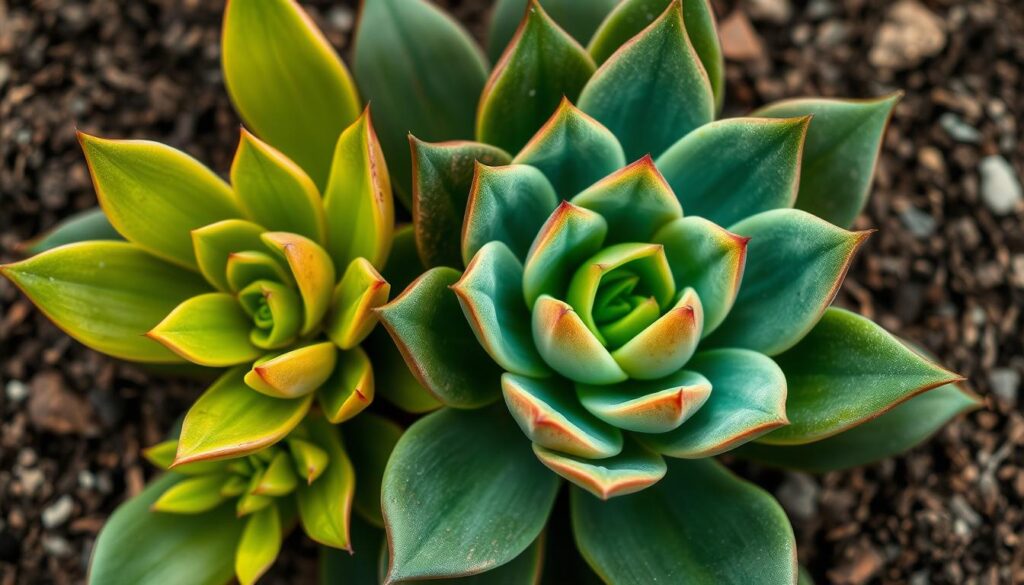
Seasonal Care Tips for Your Paddle Plant
As seasons change, so does your Paddle Plant’s care. In winter, when it’s dormant, water it only every 3-4 weeks. This stops the soil from getting too wet and rotting the roots.
It’s also key to protect it from temperature changes. If it’s cold outside, bring your plant inside or cover it up. Keep your home’s temperature between 65°F and 75°F. Humidity should be 40-50%.
- Check the top inch of soil for dryness before watering
- Keep your Paddle Plant away from drafts and extreme temperatures
- Provide bright, indirect light for at least 8 hours a day
By following these tips, you’ll keep your plant safe and healthy all year.
Decorating with Paddle Plants
Paddle Plants are great for decorating. They can make your indoor space look modern and elegant. Or, they can brighten up your garden or patio.
For design ideas, pick containers that match their shape and color. Place them on a shelf or side table. Or, use them as a centerpiece for your dining table.
For outdoor uses, plant them in the ground or in containers. This adds color to your garden or patio.
Some popular design ideas for decorating with Paddle Plants include:
- Using them in a succulent garden or arrangement
- Pairing them with other plants or flowers to create a unique and colorful display
- Using them as a focal point in a room or outdoor area
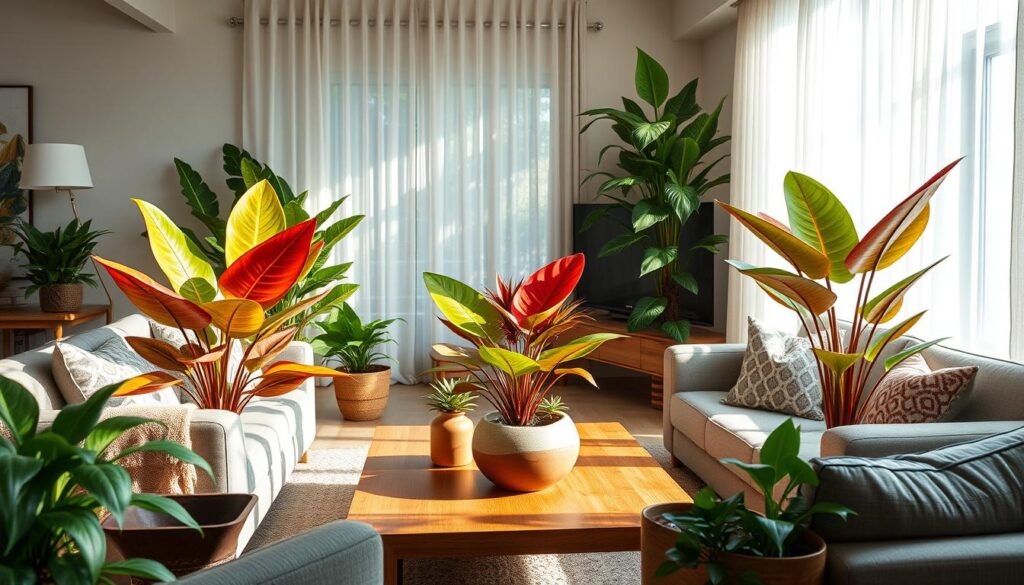
For more creative ideas on using Paddle Plants outdoors, check out trusted houseplant guides. They have tips on upcycling household items into planters.
Conclusion: Embracing the Beauty of Paddle Plant Care
As your journey with the Paddle Plant ends, think about your deep bond with nature. You’ve learned how to care for this amazing succulent. This has shown you its true beauty and strength.
The Paddle Plant is a great choice for anyone who loves plants. It adds beauty to your home and helps you love nature more. Its color-changing leaves and easy care make it perfect for busy people.
Enjoy the cultivating a connection with nature that the Paddle Plant gives. Caring for it lets you feel close to the earth, even at home. This journey as a plant lover brings peace, happiness, and a new love for the world around us.


